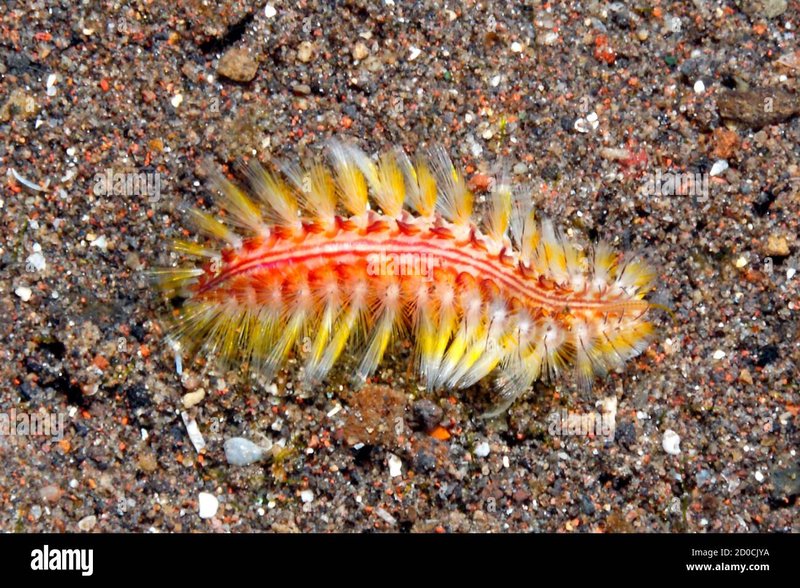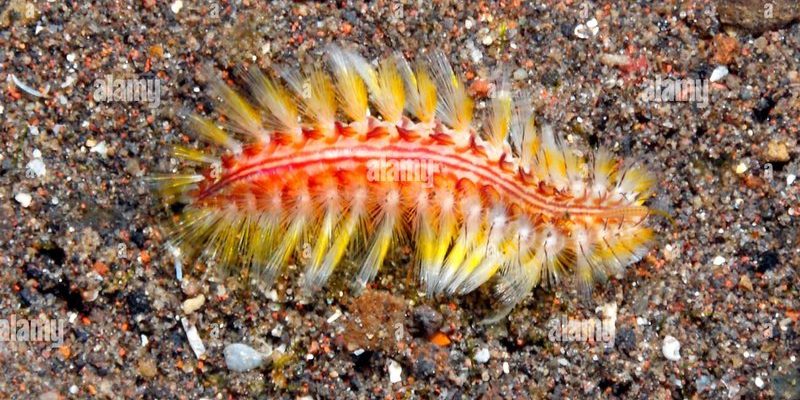
Think of the ocean as a bustling metropolis, and bristle worms as the hard-working residents doing their jobs in the ecosystem. The red tufts are like warning signs or flags flying high, telling us not just about the worms themselves, but also about their environment and behavior. So, grab your coffee, and let’s explore what those red tufts really mean!
What Are Bristle Worms?
Bristle worms, or *Polychaeta*, are a class of annelids (segmented worms) found in various marine environments. You might come across them in shallow waters, deep-sea areas, or even on coral reefs. They can vary greatly in size and color, but most have a distinct body covered with bristles or setae that help them move through the water and burrow into sediment.
One interesting thing about bristle worms is their adaptability. They can thrive in both polluted and pristine environments, showcasing their resilience. Whether they live in soft mud or rocky substrates, bristle worms play crucial roles in the ecosystem, helping to break down organic matter and serving as food for various marine animals.
These worms come in various species, with some boasting vibrant colors, including the red tufts we’re curious about. Their coloration often serves a purpose—an indicator of their health and the conditions of their surroundings.
The Role of Color in Marine Biology
Color in the marine world isn’t just for aesthetics; it serves multiple purposes. Just as we use colors to express emotions or brand a product, marine creatures use colors to signal warnings, attract mates, or camouflage themselves.
Bristle worms often display vibrant colors which can indicate their health and reproductive status. In many cases, bright colors can be a sign of toxicity or a warning to predators. This concept is known as *aposematism*, where bright colors signal danger.
When it comes to the red tufts on bristle worms, these structures are often associated with the worm’s respiratory system. You see, these tufts are actually gills that help the worms breathe underwater. So, not only are they a striking feature, but they also play a crucial role in the worm’s survival!
What Do the Red Tufts Indicate?
So, what exactly do those red tufts signify? They’re not just for show. The red tufts serve as an essential part of the bristle worm’s anatomy. Primarily, they function as gills, allowing the worm to extract oxygen from the water. This is super important for their survival, especially in areas where oxygen levels fluctuate.
In addition to respiration, the size and brightness of these tufts can indicate the bristle worm’s health. If a bristle worm is thriving, its tufts may appear brighter and fuller. Conversely, if the worm is struggling, perhaps due to pollution or lack of food, these tufts might look dull or shriveled. This makes them a reflection of the overall health of the marine environment they inhabit!
Furthermore, the presence of well-developed red tufts might suggest that the worm is in a habitat rich in nutrients. This is because healthy ecosystems often support a diverse array of marine life, including these fascinating worms.
Species That Feature Red Tufts
While many bristle worms possess red tufts, a few species stand out due to their distinctive features. Let’s explore some of these fascinating creatures:
- Hermodice carunculata: Also known as the fireworm, this species is famous for its vibrant red and orange tufts. They can give a sting if handled, hence their name.
- Palola viridis: This species is known for its seasonal breeding, during which their red tufts become more pronounced, signaling readiness to spawn.
- Chonecetos striatus: Often found in coral reef environments, this species showcases bright red tufts that indicate its health and reproductive condition.
Each of these species has unique behaviors and adaptations that complement their bright tufts. They serve to both attract mates during breeding and warn potential predators of their potential toxicity.
The Impact of Environment on Bristle Worms
The environment in which bristle worms live heavily influences their health and behavior. Factors like water quality, temperature, and food availability can all play significant roles in their survival.
For instance, bristle worms thrive in environments with plenty of organic matter to consume. A healthy coral reef or seagrass bed provides both food and a safe habitat for these worms. However, when environmental conditions worsen—like during pollution events or habitat destruction—bristle worms can struggle.
If you’re an aquarium enthusiast, it’s crucial to maintain optimal water quality if you want to keep bristle worms healthy. Not only will their red tufts indicate their well-being, but they also contribute to the overall health of your tank’s ecosystem. Just remember, clean water and good food are essential!
Observing Bristle Worms in Their Habitat
If you’re lucky enough to spot bristle worms in the wild, you might see them wriggling through the sand or clinging to rocks. They often come out during the night to feed, making them a bit elusive.
When observing them, pay close attention to those red tufts. Are they vibrant and bright? That’s a good sign! A healthy population of bristle worms suggests a flourishing ecosystem. Conversely, if their tufts appear dull, it might be an indicator that something’s off in their environment.
You might be wondering how you can gently observe these creatures without disturbing them. Try snorkeling or diving in areas where they are known to reside. Just remember to respect their space and avoid touching them too much; we want to keep the ocean’s residents happy and healthy!
Understanding the significance of red tufts on bristle worms opens up a window into the marine ecosystem’s health. These vibrant features not only aid in respiration but also serve as indicators of the worm’s condition and, by extension, the environment in which they thrive.
So the next time you come across a bristle worm, take a moment to appreciate those striking red tufts. They’re not just pretty colors; they tell a story of adaptation, health, and the intricate connections within our oceans. By caring for our marine environments, we can help ensure that these fascinating creatures continue to thrive. After all, the ocean is a wondrous place filled with stories waiting to be told!

